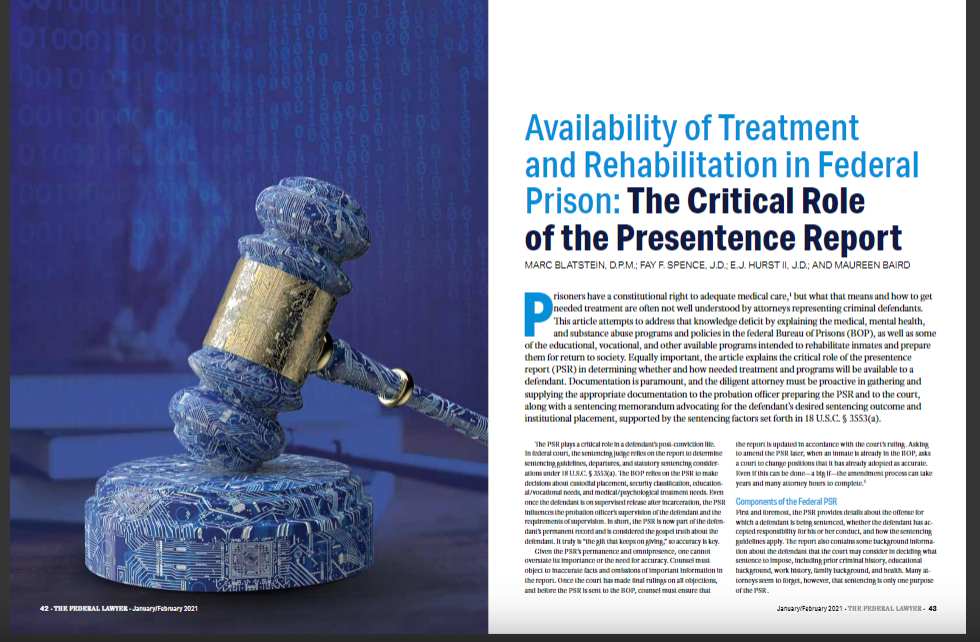
WHERE?
AND HOW LONG WILL YOU SERVE?
Your Presentence Report (PSR)
The PRESENTENCE REPORT (PSR) is your “REFERRAL“ THAT CONTROLS ALL ASPECTS OF YOUR LIFE AND IMMEDIATE FUTURE – REDOS ARE FEW, EXPENSIVE, AND A HEAVY LIFT.
ITS ACCURACY AND COMPLETENESS CANNOT BE OVERSTATED.
WILL ALL YOUR WORK BE SUBMITTED TO YOUR PROBATION OFFICER, ‘1-2 WEEKS BEFORE’ YOUR PRESENTENCE INTERVIEW?
WHAT DOES PREPARATION LOOK LIKE?
- PROVIDE ALL COPIES OF YOUR BIOGRAPHICAL BACKGROUND AND PERSONAL I.D.
- IT IS RECOMMENDED THAT YOU SPEND TIME SELF-REFLECTING,
- THEN, WRITE YOUR AUTOBIOGRAPHY OR LIFE STORY AND EXPLAIN WHAT CAUSED YOU TO BREAK THE LAW WITHOUT EXCUSES, ACCEPTING RESPONSIBILITY AND HAVING REMORSE FOR THE VICTIMS YOU HAVE HARMED.
- WHY – DID YOU LIKE YOUR FEDERAL INDICTMENT? THAT IS THE DOJ NARRATIVE (OR STORY) OF YOU. TO COUNTER IT, TELL YOUR OWN STORY OR NARRATIVE.
- HOW DO YOU GO ABOUT WRITING IT?
Including your Sentencing memo that addresses your Sentence Length (under USSC Guidelines,) along with your Placement Request, submitted to your Probation Officer before their PSR is final, makes a lot of sense to me.
Judges understand that crimes do not happen in a vacuum. They are also very interested in hearing from you, the defendant, in your own words. What happened – that caused you to break the law? Include the significant parts of your life and the low points, omitting nothing. Include The Good, The Bad, and The Ugly. I hope you find this video helpful.
FACTORS THAT IMPACT YOUR RELEASE DATE
- Your Remorse
- Acknowledging Your Victim’s Pain
- It includes You Accepting Responsibility
THE PRESENTENCE REPORT DETERMINES YOUR
- Security Level Requirements
- Medical and Mental Healthcare Needs
- Psychology Programs – Limited Availability
- FSA Programming, and Criminogenic Needs, Risk Assessment
Call 240.888.7778 for a personal one-on-one call
to discuss your current issue or that of a loved one.-Marc Blatstein
We are not Attorneys; you need Legal Representation.
This video reviews how The Presentence Report (PSR) Determines Your Future. Therefore, Preparation Is Critical At Each Stage In The Process, as a Criminal Defendant and Later as a Justice-Impacted Person.
-
-
- Judges use the PSR to determine the length of a sentence.
- The Bureau of Prisons (BOP) uses the same PSR for prison placement.
- Probation again uses the PSR during Supervised Release.
- Lastly, this same PSR becomes a permanent part of your record and the Inmates Bible—the gift that keeps on giving.
-
